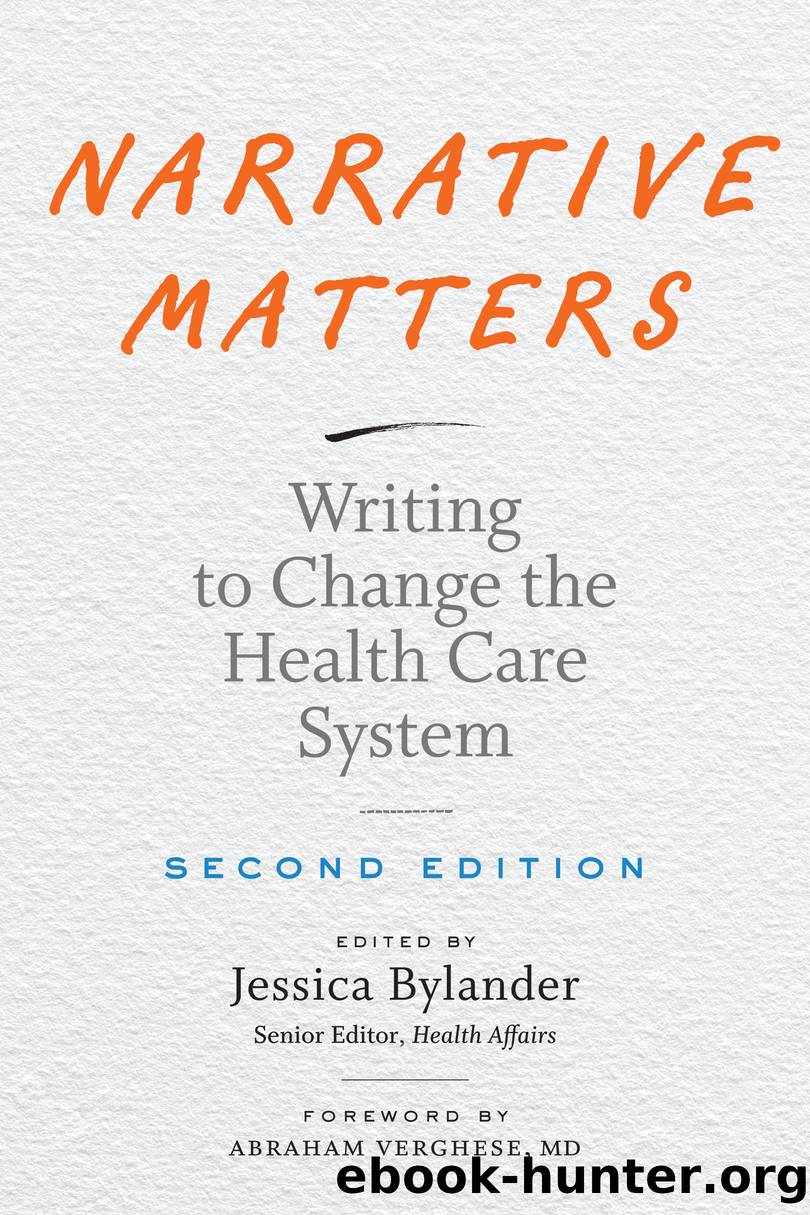Narrative Matters by Jessica Bylander

Author:Jessica Bylander
Language: eng
Format: epub
Publisher: Johns Hopkins University Press
Developing the Health Workforce the Nation Needs
Given these realities, what can be done to make a career in the health professions more affordable and the health workforce more inclusive? I believe that the nation’s health profession schools must work diligently to avoid increasing tuitions further. This will require greater efforts by trustees, presidents, deans, and others in the schools to secure the needed funds from public and private sources to lessen the burden currently placed on health professions students and their families.
To stimulate and support the expansion of health professions education in the nation during the second half of the twentieth century and to avert a predicted shortage of health professionals, Congress enacted a number of bills in the 1960s and 1970s, collectively referred to as “health manpower” legislation. One of the initiatives developed at that time was the National Health Service Corps, which has a program that provides full tuition, covers the cost of books, and pays a living stipend to students who commit to practicing in a federally designated Health Professional Shortage Area for a specified number of years after completion of their postgraduate training. This program has been very effective in supporting future health professionals and placing them in medically underserved rural and urban areas. Unfortunately, it and other scholarship programs were drastically reduced in the 1980s. The American Recovery and Reinvestment Act of 2009 and the Affordable Care Act of 2010 include significant expansion of the National Health Service Corps scholarship program.
Today many health profession students rely extensively on student loan programs to support their years of training. In its August 2015 report, the AAMC stated that among the students graduating from a US medical school in 2014, mean educational debt was $178,000, 31.5 percent of the students had total debt of more than $200,000, and 41.9 percent of black male students had educational debt in excess of $200,000 (the report did not enumerate medical school debt for female students).
A number of novel programs and initiatives have been rolled out recently, aimed at making health profession education more affordable.
The Uniformed Services University of the Health Sciences, for instance, trains health professionals for careers in the military services. Because of their military commitment, the students obtain their education at no cost. Military scholarships are also provided to health profession students in many medical schools in return for their subsequent service as health professionals in the military for a defined period.
The Salina campus of the University of Kansas School of Medicine recruits students committed to becoming primary care physicians and working in medically underserved rural communities in Kansas. Through the medical school’s Kansas Bridging Plan, some of the students’ educational debts are forgiven in return for practicing in these underserved communities. Several states have similar programs for paying off educational debt, including Louisiana’s State Loan Repayment Program, intended to encourage primary care practitioners to serve in Health Professional Shortage Areas, and a Minnesota loan forgiveness program to encourage midlevel providers—physician assistants, nurse practitioners, certified nurse midwives, dental therapists, and others—to practice in rural areas.
Download
This site does not store any files on its server. We only index and link to content provided by other sites. Please contact the content providers to delete copyright contents if any and email us, we'll remove relevant links or contents immediately.
Good by S. Walden(2915)
The Social Psychology of Inequality by Unknown(2311)
0041152001443424520 .pdf by Unknown(2220)
The Checklist Manifesto by Atul Gawande(2204)
The Meaning of the Library by unknow(2069)
23:27 by H. L. Roberts(1892)
Guns, Germs and Steel by Diamond Jared(1884)
Being Mortal: Medicine and What Matters in the End by Atul Gawande(1805)
Borders by unknow(1785)
A Leg to Stand On by Oliver Sacks(1713)
The Hot Zone by Richard Preston(1632)
And the Band Played On by Randy Shilts(1615)
The Valachi Papers by Peter Maas(1516)
The Obesity Epidemic by Robyn Toomath(1421)
The Laws of Medicine by Siddhartha Mukherjee(1414)
The Andromeda Strain by Michael Crichton(1367)
The Plague and I by Betty Macdonald(1268)
Pharmacy Practice and The Law by Richard Abood(1254)
Autism's False Prophets by Paul A. Offit(1238)
